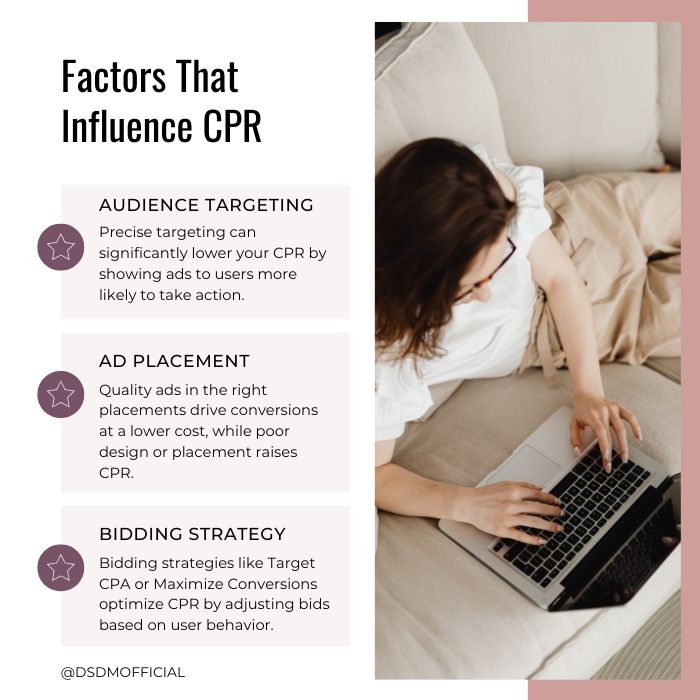In the dynamic world of digital marketing, understanding key metrics is essential for campaign success. One such metric is Cost Per Result (CPR), a term that often confuses marketers but is crucial for measuring the efficiency of marketing campaigns.

In this blog post, we’ll dive deep into CPR, its significance in digital marketing, how to calculate it, and strategies for optimizing it to improve your campaign performance.
Let’s explore the following subtopics in detail.
1. Introduction to CPR in Digital Marketing
What Does CPR Stand For?
CPR, or Cost Per Result, measures the cost incurred for achieving a specific outcome in a digital marketing campaign. The “result” can vary based on the campaign objective, such as a lead, a purchase, a download, or an event registration.
Unlike generic cost-per-click (CPC) metrics, CPR focuses on tangible outcomes that directly align with marketing goals.
Why Is CPR Important in Digital Marketing?
CPR is an essential metric because it allows marketers to understand how much they’re paying for each desired action.
It gives insights into the cost-effectiveness of marketing efforts, allowing for better budget allocation and performance optimization.
2. Understanding the Concept of CPR
How CPR Is Defined in Marketing Metrics?
CPR is essentially the amount spent divided by the number of successful results.
For example, if you spent Rs.5000 on a campaign and gained 50 leads, your CPR would be Rs.100 per lead.
Differences Between CPR and Other Marketing Metrics (CPA, CPC, CPM)
- CPR vs. CPA (Cost Per Acquisition): CPA focuses on acquiring customers, while CPR can measure any result, including actions like downloads or sign-ups.
- CPR vs. CPC (Cost Per Click): CPC measures the cost of getting a click, while CPR looks at the cost of achieving an end goal.
- CPR vs. CPM (Cost Per Mille): CPM measures the cost for 1,000 impressions, while CPR assesses the cost for specific actions.
3. How to Calculate CPR?
Formula for Calculating CPR
The basic formula for CPR is:
CPR = Total Ad Spend / Number of Results
Example Calculation of CPR
Suppose you run a digital marketing campaign with a budget of Rs.10,000 to get app downloads.
If you achieve 100 downloads, the CPR would be:
CPR = Rs.10,000 / 100 = Rs.100 per download
4. The Role of CPR in Campaign Performance Analysis
Why Marketers Use CPR to Measure Success?
CPR provides a direct measure of how efficiently your marketing budget is being used to generate results.
This metric helps identify underperforming campaigns and allows for informed decision making on where to focus resources.
Evaluating the Cost-Effectiveness of Marketing Campaigns
By analyzing CPR, marketers can determine which campaigns are delivering the best return on investment (ROI). If a campaign’s CPR is too high, it may indicate inefficiencies in the marketing strategy.
5. Factors That Influence CPR

Audience Targeting
Targeting the right audience can significantly impact your CPR. The more precise your targeting, the more likely you are to achieve lower CPR since your ads are shown to users who are more likely to take action.
Ad Placement and Quality
High-quality ads placed in relevant locations are more likely to generate conversions at a lower cost. Poorly designed ads or inappropriate ad placements can result in higher CPR.
Bidding Strategy
Your bidding strategy can also affect CPR. Automated bidding strategies, such as Target CPA or Maximize Conversions, can help optimize CPR by adjusting bids based on user behaviour and conversion likelihood.
6. CPR vs. CPA: Which Metric Should You Focus On?
Key Differences Between CPR and CPA
While both metrics aim to measure cost efficiency, CPA specifically focuses on customer acquisition, whereas CPR can be applied to any predefined result.
When to Prioritize One Metric Over the Other?
- Use CPA when your goal is customer acquisition.
- Use CPR when you want to measure a variety of results, such as app downloads, event registrations, or video views.
7. Strategies to Optimize CPR
Best Practices for Reducing CPR
- Refine Targeting: Narrow down your audience to include users most likely to convert.
- Improve Ad Quality: Craft compelling ads with clear calls-to-action (CTAs).
- Optimize Landing Pages: Ensure landing pages are relevant and user-friendly to improve conversion rates.
Tools and Techniques for Tracking CPR
Using analytics platforms like Google Ads, Meta Ads Manager, or HubSpot can help you track CPR in real time. These tools also offer insights on optimizing your campaigns.
8. Examples of CPR in Different Digital Marketing Channels
Social Media Advertising (Facebook, Instagram)
Facebook and Instagram allow advertisers to choose various objectives (e.g., lead generation, app installs). The CPR in these cases will differ based on the desired result. To effectively navigate these objectives and optimize your campaigns, consider enrolling in our Facebook Ads Training.
Search Engine Advertising (Google Ads)
In Google Ads, CPR is typically used in campaigns where the objective is specific actions like purchases or sign-ups, rather than just clicks. If you want to enhance your campaign optimization for these goals, consider signing up for our Google Ads Training.
Email Marketing Campaigns
While email marketing primarily measures metrics like open rate and click-through rate, CPR can also be calculated based on conversion actions taken after email clicks.
9. Common Mistakes to Avoid When Using CPR
Misinterpreting the Results
CPR is not a standalone metric; it should be analyzed alongside other metrics like ROI and conversion rate for a complete picture.
Overemphasizing CPR Without Considering Other Metrics
Focusing solely on CPR may cause you to overlook other critical factors such as customer lifetime value (CLTV) or brand awareness.
10. Tools for Monitoring and Analyzing CPR
Recommended Analytics Tools
- Google Analytics: Offers insights on conversion tracking.
- Facebook Ads Manager: Helps monitor CPR for social media campaigns.
- HubSpot: Provides comprehensive data for tracking various marketing metrics, including CPR.
How to Integrate CPR Tracking with Overall Marketing Performance Measurement?
Using a marketing dashboard can consolidate all relevant metrics, including CPR, allowing for more strategic campaign decisions.
11. Case Studies: Real-World Applications of CPR in Digital Marketing
Examples of Companies That Optimized CPR to Boost Their ROI

Lessons Learned from CPR-Based Campaign Adjustments
These case studies demonstrate the importance of continuous optimization and adapting strategies based on CPR insights.
12. Future Trends and the Role of CPR in Digital Marketing Analytics
How CPR Is Evolving With Advancements in Digital Marketing?
As AI and machine learning play a bigger role in digital marketing, CPR will likely become more dynamic, adjusting in real time based on data driven insights.
The Future of Campaign Performance Metrics
Incorporating AI for predictive analysis and using multi-channel attribution will likely improve CPR tracking and optimization in the future.
13. Conclusion:
Why Marketers Should Care About CPR?
CPR is a powerful metric for gauging the efficiency of your marketing campaigns. It provides actionable insights into how well your budget is being utilized to achieve your marketing goals.
By understanding and optimizing CPR, marketers can improve their campaign performance, maximize ROI, and stay competitive in the ever-evolving digital marketing landscape. To dive deeper into these concepts and enhance your skills, consider enrolling in our digital marketing course at DSDM.
